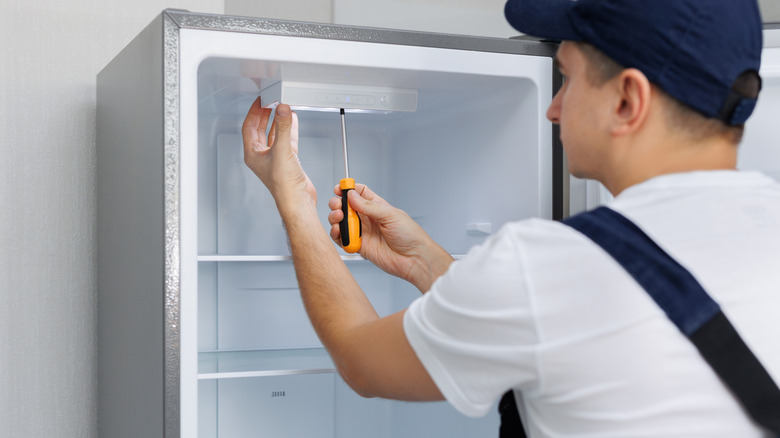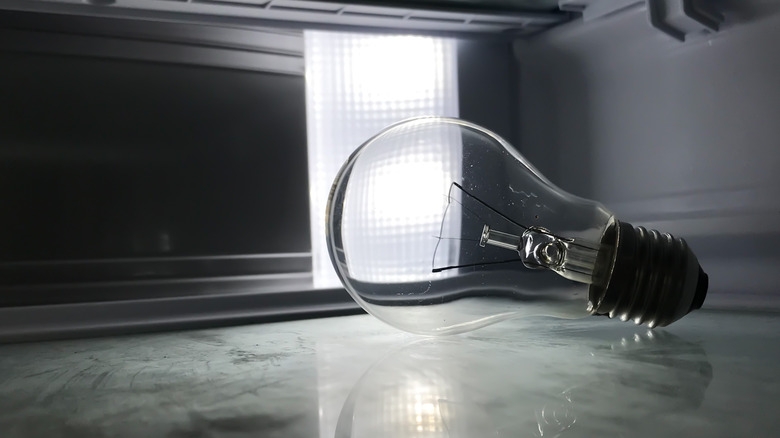No, You Shouldn't Use A Regular Light Bulb In A Refrigerator - Here's Why
It's a common situation: you open the fridge, and the light doesn't come on. So you decide to save the day and just swap in a regular bulb from the junk drawer. But before you do, you should know that a regular everyday bulb might not be the quick fix you think it is.
The fact is that standard light bulbs are the wrong choice, no matter how good or bad the refrigerator brand is. The cold temperature can mess with the filament, especially in older incandescent bulbs, making them more fragile and more likely to burn out faster than expected. There's also the problem of moisture, as condensation is a normal part of how fridges work. But it doesn't mix well with bulbs that aren't designed to handle damp conditions. A regular bulb, combined with that combo of cold and moisture, can lead to electrical issues, or in some cases, even a fire.
That's why it's worth using a bulb that's specifically made for appliances. These are built to tolerate the chilly, sometimes damp environment inside your refrigerator without any trouble. Not only will you have the right bulb for the job, you won't be left in the dark, and you'll stay safe as well.
You have options when choosing a refrigerator light bulb
When it comes to choosing the right type of appliance bulb for your refrigerator, there are several options, each with its own strengths and weaknesses. Incandescent bulbs made specifically for appliances light up by heating a filament and handle cold temperatures fairly well. But they don't last very long and tend to cast a warm, yellowish glow. Halogen bulbs are similar but last longer and shine brighter with better color, though they can be sensitive to electrical fluctuations. Compact fluorescent lamps, or CFLs, save energy and produce cooler light, but they don't like extreme cold or moisture and may burn out faster in a fridge.
But if there's a clear winner, it may be LED bulbs. Not only will you save money by switching to LED, they use very little energy, last a long time, and handle cold environments well. However, with so many labels and specs, like Kelvin scale, dimmable or non-dimmable, and lumen, it can be confusing to pick the right one. So when in doubt, it's always a good idea to check your owner's manual.
When it comes to watts, standard appliance bulbs are between 25 and 40 watts, usually size A15, though some models require a T8 intermediate base bulb. Knowing the right specs upfront will save you a second trip to the store, and ensure you're getting a bulb that actually works in your fridge.

